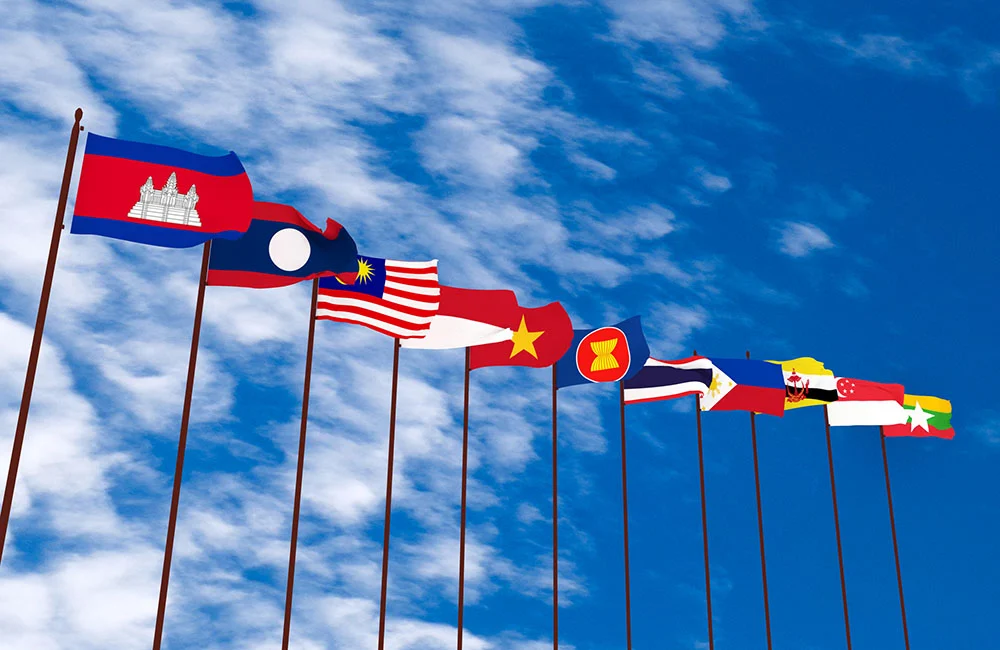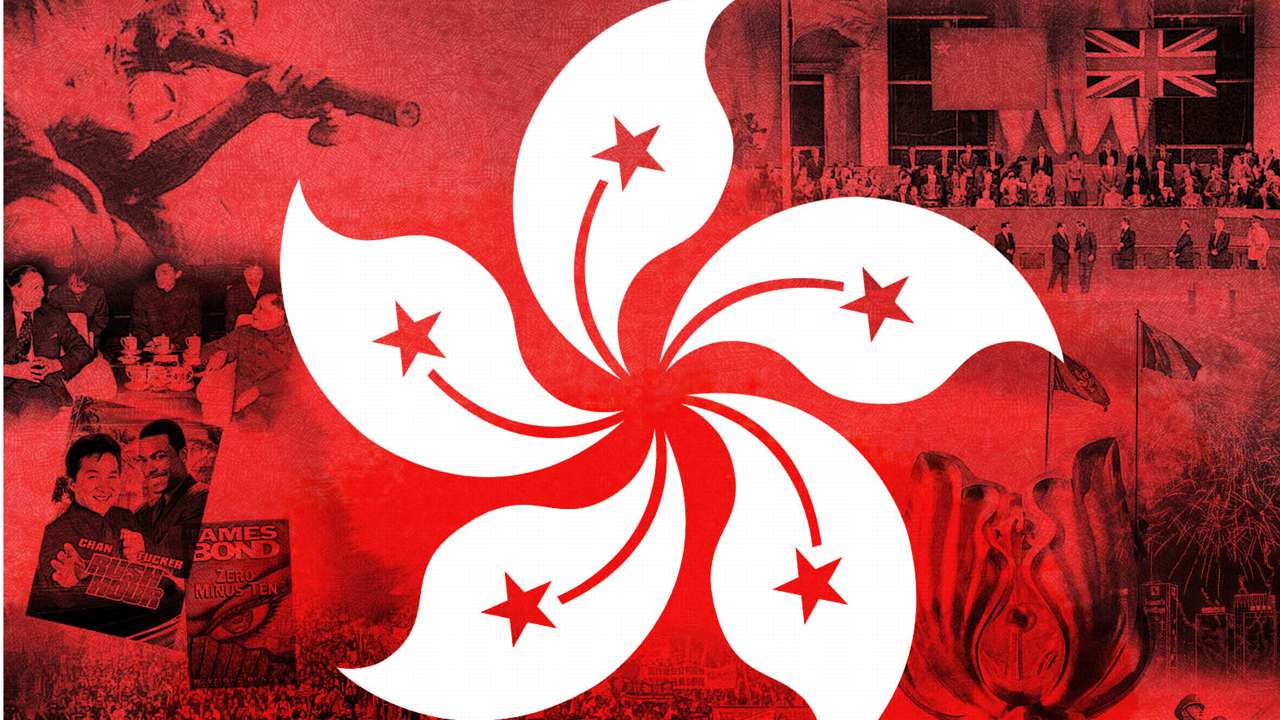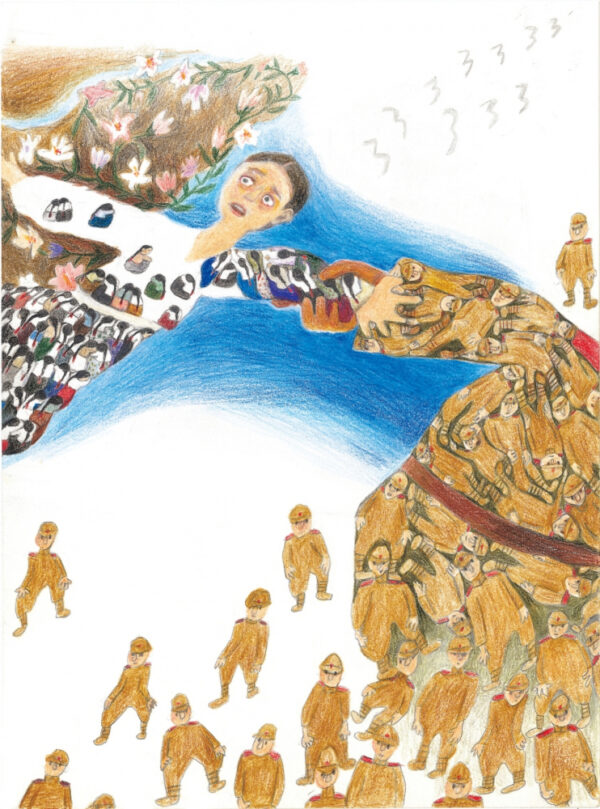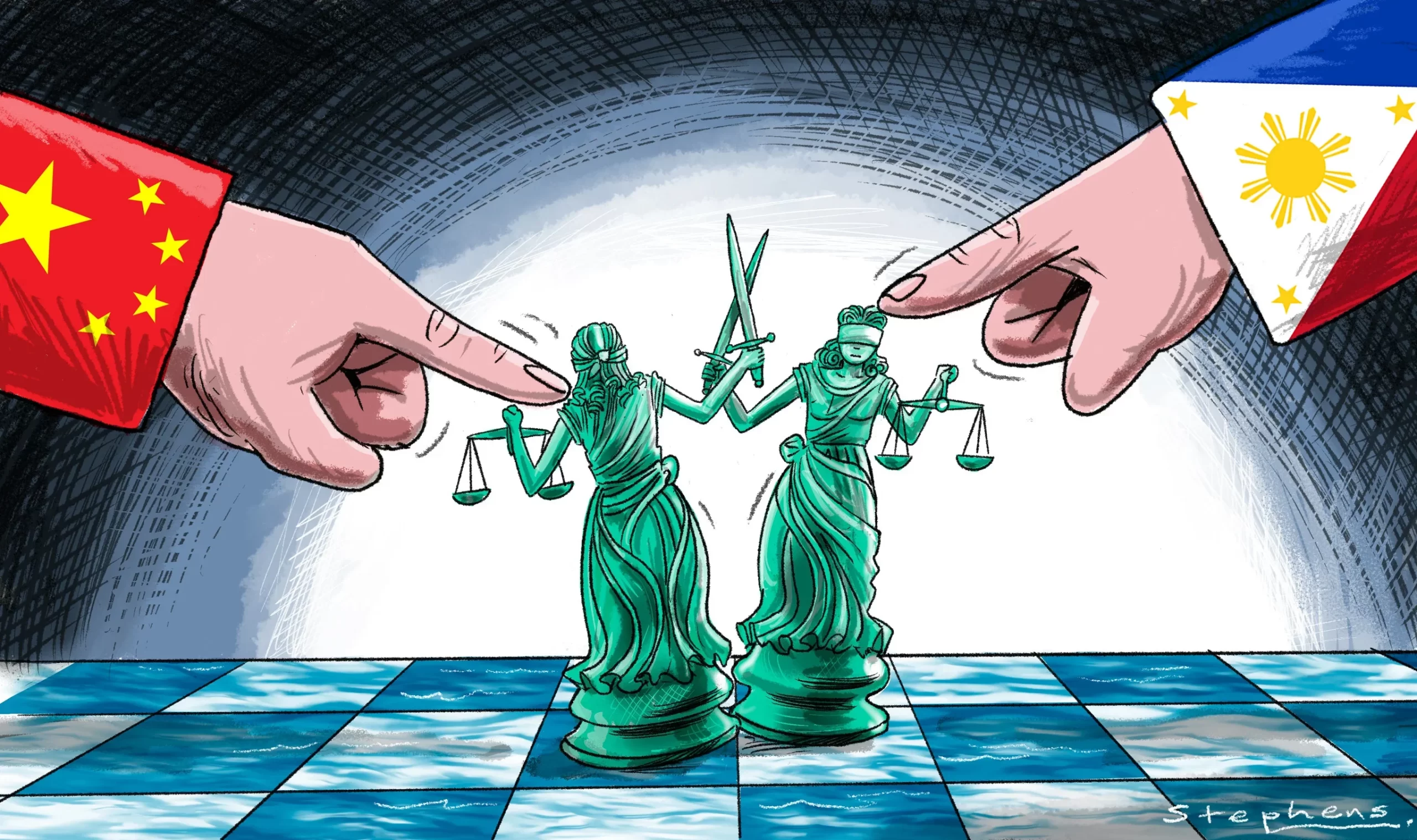With the rise of China, war in Europe, and American isolationism, the pendulum of the world’s economic and political power is swinging back towards Asia. The institutional structure of the Association of Southeast Asian Nations (ASEAN) has proven to be a limiting factor in unlocking the economic and political potential of the Southeast Asian people. ASEAN’s “Talk-Shop” mentality is not fit for the great powers’ scramble for a foothold in the Asia Pacific region. Only a true supranational unity between the Southeast Asian Nations can raise the region’s rich and diverse peoples into a great power that can withstand the pressure from the likes of China and the United States. It is time for Southeast Asian Countries to evolve into a supranational state entity.
The Southeast Asian Federation (SEAF) must emerge. ASEAN has failed to unlock the region’s potential and risked the future integrity and prosperity of Southeast Asia, as well as offering a vision of the SEAF. Nevertheless, the path to SEAF’s success comes with many challenging factors to overcome. Thus, it takes the best socio-economic planning, construction, and operation to develop SEAF. This document will not be able to cover the entire essence of SEAF, but it will lay the philosophical foundation for the Federation.
ASEAN: A relic of the past
If ASEAN were to be a single country, it would be the fifth-largest economy in the world, totaling a GDP of US$3.6 trillion in 2022, only trailing behind the United States ($25.5 trillion), China ($ 17.9 trillion), Japan ($ 4.2 trillion), and Germany ($ 4.1 trillion).[1] In fact, ASEAN facilitated the economies of 10 member states that together consistently outperformed the World’s average GDP growth.[2] While ASEAN heavily focuses on the economy, it significantly neglected socio-political development.
ASEAN failed to create a similar degree of identity and privileges within the European Union (EU) members.[3] ASEAN members still lack privileges such as Freedom of Movement, a Common Currency, and Common Borders. I believe the underdevelopment of a politically unified Southeast Asia not only limits ASEAN’s economic potential but also hinders the consecration of a unifying pan-Southeast Asian identity. Consequently, Southeast Asia continually retains the divisions from the colonial era instead of evolving past it.
Unfortunately, ASEAN’s founding principle had no intention of becoming a hegemonic supranational institution.[4] ASEAN does not have a legislature that can pass laws, nor does it possess a supranational judicial court.[5] The structure in which ASEAN members interact with one another to enact a unanimous decision is through a dialogue-driven process coined as the “Talk Shop.”[6] The foundation for the “ASEAN Talk Shop” can be traced back to the 1967 Head of Government Summit where members formalized the Mutual Non-intervention doctrine, which customarily prevents countries, including the ASEAN entity, from intervening in other member states’ domestic politics and security.[7] However, the doctrine has come under significant strain in recent years.
The most notable challenge to the non-intervention doctrine is the current civil war in Myanmar. The past four years of the conflict have highlighted ASEAN’s failure to enforce peace. ASEAN member states and Min Aung Hlaing’s Myanmar Junta government unanimously agreed on the April 2021 Five-Point Consensus (FPC) for the ceasing violence and other humanitarian actions.[8] However, the Junta government did not follow through on the agreement.[9] ASEAN’s lack of enforcement mechanisms limited the association’s ability to provide peace and stability in the region.[10] The Myanmar case only highlights one of the many current and future crises that will affect the peace and prosperity in the area.
ASEAN’s self-imposed limitation on political development may have been insignificant in the past decade. However, the world is transitioning from the unipolar “Pax-Americana” world with the United States as its sole hegemon into a multipolar world with China as America’s main competitor for global hegemony. Political pressures from the 21st-century’s great powers in the highly strategic Indo-Pacific region introduce a significant security threat to Southeast Asia. The current structure of ASEAN will struggle to effectively deal with possible security threats that Southeast Asian nations may face in the future. One such security concern is that two Southeast Asian states have differing allegiances with opposing great powers.

1965 Civic Education Service Map of Southeast Asia During the Vietnam War illustrating the” Bamboo Curtain”[11]
During the Cold War, the “Bamboo Curtain” divided Southeast Asia between the Communist block and Anti-communist states. The division resulted in instability throughout the region. Similarly, today, ASEAN member states face influence from China and the United States, undermining Southeast Asian unity. The lack of Southeast Asian unity today leads to the overreliance of some ASEAN members on great power foreign investments and aid. In the future, this disunity may lead to internal conflict within Southeast Asia between two states backed by opposing great powers, as reflected during the Cold War. Thus, this highlights the threat facing Southeast Asia amid ASEAN’s continual lack of compelling developments to further the political unity in Southeast Asia.
The Federation
SEAF will be the most monumental political project of our time. Not only will it have to incorporate states with entirely different government systems, but it will also unite a region where education, economics, and even the sides of the road each member drives on are entirely different. SEAF needs to ensure peace, prosperity, and security in Southeast Asia where ASEAN has fallen short. A key objective for SEAF is the dismantling of intra-member borders and the creation of a SEAF citizenship society for the cultivation of a new pan-Southeast Asian identity. Ideally, SEAF will have a government that represents its citizens. It will have to have a common market and a single currency to facilitate ease of trade within its border. Eventually, the goal is to reach a stage of Economic symmetry where SEAF has the same Economic growth rate, Inflation rate, Unemployment rate, and Government budget.[12] One must also consider giving SEAF the proper coercive apparatus (constructive power) to carry out its policy, such as a Federal Police Agency and a SEAF judicial court. However, one must first identify where exactly SEAF is in relation to Southeast Asia.
It is a priority to establish SEAF in the continental region of Southeast Asia: Myanmar, Thailand, Laos, Cambodia, and Vietnam. From the Thai border with Myanmar to the Vietnamese maritime dispute with China, Continental Southeast Asia is the more volatile part of Southeast Asia. Therefore, it is more vital to first establish SEAF on the continent rather than on the archipelago region where the borders lie on bodies of water or uninhabited jungles. Only the future can decide how these countries will come together to form SEAF. What form of government might SEAF take on? Who would represent the legislative process of SEAF? How will the SEAF citizens be taxed? The possibilities are endless, but these are the exciting questions that the founders of SEAF must determine for themselves.
The Next Southeast Asia
Southeast Asia now has a window of opportunity to define its future. ASEAN has brought unprecedented growth, peace, and connectivity to Southeast Asia. However, ASEAN’s inability to adapt to the ever-shifting geopolitics in the 21st century means that it is time for a more fitting entity to lead the future of Southeast Asia. The Southeast Asian Federation must become the apparatus that facilitates the dynamic evolution of the region in the face of internal and external challenges. The Century of Southeast Asia awaits its calling.
Paul Phanachet is a fourth-year student in the Political Science Specialist program at the University of Toronto. Born in Bangkok, Thailand, he lived through two coup d’etats and numerous protests in the country sparking an interest in topics about Political Development, Institutions and Security in Southeast Asia. He is currently a student Research Assistant at the Munk School and a Contributor in the Southeast Asia Section at Synergy.
Bibliography
ASEANstats. “Building Knowledge in the ASEAN Community.” ASEAN Statistical Brief, January 2024. https://www.aseanstats.org/wp-content/uploads/2024/01/00.-ASEAN-Statistical-Brief-on-GDP_19Jan2024.pdf.
Brooks, Naomi. “Don’t Forget Refugees as War Continues to Ravage Myanmar.” Devpolicy Blog from the Development Policy Centre, February 3, 2025. https://devpolicy.org/dont-forget-refugees-as-war-continues-to-ravage-myanmar-20240204/.
Camroux, David. “The European Union and ASEAN: Two to Tango?” Paris, France: Centre D’études Et De Recherches Internationales (CERI), June 17, 2008. https://institutdelors.eu/wp-content/uploads/2018/01/etude65eu-asean-en.pdf.
Civic Education Service. 1965 Civic Education Service Map of Southeast Asia during the Vietnam War. 1965. Geographicus Rare Antique Maps. https://www.geographicus.com/P/AntiqueMap/southeastasia-civiceducation-1965-3.
Epstein, Adinda Khaerani. “ASEAN Split over Geopolitical Challenges.” GIS Reports, October 2, 2024. https://www.gisreportsonline.com/r/asean-issues/.
He, Jiajie. “Normative Power in the EU and ASEAN: Why They Diverge.” International Studies Review 18, no. 1 (2016): 92–105. https://www.jstor.org/stable/24758340.
Ishikawa, Koichi. “The ASEAN Economic Community and ASEAN Economic Integration.” Journal of Contemporary East Asia Studies 10, no. 1 (March 2, 2021): 24–41. https://doi.org/10.1080/24761028.2021.1891702.
Johnson, Casey. “Center for Excellence in Disaster Management & Humanitarian Assistance.” CFE-DM. Ford Island, HI: Center for Excellence in Disaster Management & Humanitarian Assistance, August 2024. https://www.cfe-dmha.org/LinkClick.aspx?fileticket=e7vJaE1I59M%3D&portalid=0.
Kaur, Amarjit. “Labour Migration Trends and Policy Challenges in Southeast Asia.” Policy and Society 29, no. 4 (November 2010): 385–97. https://doi.org/10.1016/j.polsoc.2010.09.001.
Keling, Mohamad Faisol, Hishamudin Md.Som, Mohamad Nasir Saludin, Md. Shukri Shuib, and Mohd Na’eim Ajis. “The Development of ASEAN from Historical Approach.” Asian Social Science 7, no. 7 (July 2011): 169–89. https://repo.uum.edu.my/id/eprint/7270/.
Lee, Edward. “ASEAN: Growth in the Fast Lane.” Asian Management Insights (Singapore Management University), May 2015. https://ink.library.smu.edu.sg/ami/29.
Menon, Jayant. “Southeast Asia’s Economic Performance in 2024 and Outlook for 2025: Navigating Rising Risks.” FULCRUM, January 6, 2025. https://fulcrum.sg/southeast-asias-economic-performance-in-2024-and-outlook-for-2025-navigating-rising-risks/.
Molthof, Mieke. “ASEAN and the Principle of Non-Interference.” E-International Relations, February 8, 2012. https://www.e-ir.info/2012/02/08/asean-and-the-principle-of-non-interference/.
Oh Seng Leong, Brian. “The ASEAN Political-Security Community: A Flawed Project in Crisis Management.” Lee Kuan Yew School of Public Policy. Centre on Asia and Globalisation, December 31, 2024. https://lkyspp.nus.edu.sg/cag/publications/center-publications/publication-article/detail/the-asean-political-security-community-a-flawed-project-in-crisis-management.
Panu Wongcha-um. “US Aid Freeze Is New Threat for Ailing Myanmar Refugees on Thai Border.” Reuters, February 6, 2025. https://www.reuters.com/world/asia-pacific/us-aid-freeze-is-new-threat-ailing-myanmar-refugees-thai-border-2025-02-05/.
Preepremmote, Patcharee, Sumalee Santipolvut, and Thitima Puttitanun. “Economic Integration in the ASEAN and Its Effect on Empirical Economic Growth.” Journal of Applied Economic Sciences 8, no. 4 (2018): 923–34.
Ramcharan, Robin. “ASEAN and Non-Interference: A Principle Maintained.” Contemporary Southeast Asia 22, no. 1 (2000): 60–88. https://www.jstor.org/stable/25798479.
Rasjid, Arsjad. “ASEAN Is the World’s Economic Dark Horse. Here’s Why.” World Economic Forum, August 22, 2023. https://www.weforum.org/stories/2023/08/asean-economic-growth/.
Footnotes
-
ASEANstats, “Building Knowledge in the ASEAN Community,” ASEAN Statistical Brief, January 2024, https://www.aseanstats.org/wp-content/uploads/2024/01/00.-ASEAN-Statistical-Brief-on-GDP_19Jan2024.pdf. ↑
-
Edward Lee, “ASEAN: Growth in the Fast Lane,” Asian Management Insights (Singapore Management University), May 2015, 21, https://ink.library.smu.edu.sg/ami/29. ↑
-
David Camroux, “The European Union and ASEAN: Two to Tango?” (Paris, France: Centre D’études Et De Recherches Internationales (CERI), June 17, 2008), https://institutdelors.eu/wp-content/uploads/2018/01/etude65eu-asean-en.pdf. ↑
-
Mieke Molthof, “ASEAN and the Principle of Non-Interference,” E-International Relations, February 8, 2012, https://www.e-ir.info/2012/02/08/asean-and-the-principle-of-non-interference/. ↑
-
David Camroux, “The European Union and ASEAN: Two to Tango?” (Paris, France: Centre D’études Et De Recherches Internationales (CERI), June 17, 2008), https://institutdelors.eu/wp-content/uploads/2018/01/etude65eu-asean-en.pdf. ↑
-
Jiajie He, “Normative Power in the EU and ASEAN: Why They Diverge,” International Studies Review 18, no. 1 (2016): 94, https://www.jstor.org/stable/24758340. ↑
-
Robin Ramcharan, “ASEAN and Non-Interference: A Principle Maintained,” Contemporary Southeast Asia 22, no. 1 (2000): 60–1, https://www.jstor.org/stable/25798479. ↑
-
Adinda Khaerani Epstein, “ASEAN Split over Geopolitical Challenges,” GIS Reports, October 2, 2024, https://www.gisreportsonline.com/r/asean-issues/. ↑
-
Ibid. ↑
-
Brian Oh Seng Leong, “The ASEAN Political-Security Community: A Flawed Project in Crisis Management,” Lee Kuan Yew School of Public Policy (Centre on Asia and Globalisation, December 31, 2024), https://lkyspp.nus.edu.sg/cag/publications/center-publications/publication-article/detail/the-asean-political-security-community-a-flawed-project-in-crisis-management. ↑
-
Civic Education Service, 1965 Civic Education Service Map of Southeast Asia during the Vietnam War, 1965, Geographicus Rare Antique Maps, 1965, https://www.geographicus.com/P/AntiqueMap/southeastasia-civiceducation-1965-3. ↑
-
Patcharee Preepremmote, Sumalee Santipolvut, and Thitima Puttitanun, “Economic Integration in the ASEAN and Its Effect on Empirical Economic Growth,” Journal of Applied Economic Sciences 8, no. 4 (2018): 923–34. ↑








